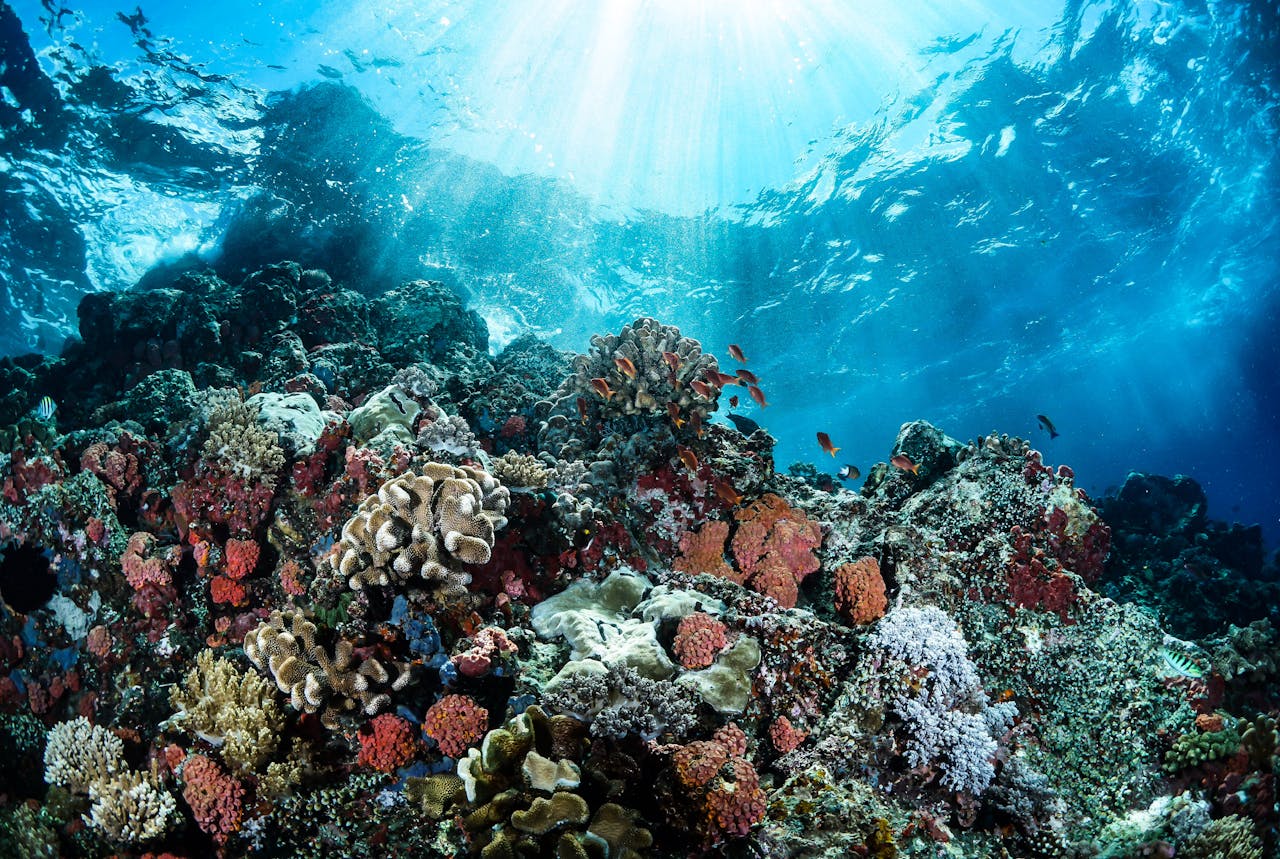Ocean acidification isn’t a dramatic eco-warrior statement. It’s a truth scientists are only now realizing — the ocean pH is decreasing. Plants absorb carbon dioxide (CO2) when they produce oxygen, but water is also an excellent absorber of CO2, which is how you make fizzy or acidic carbonated soft drinks.
As a child, you learned ocean water covers about 70% of the earth’s surface. It’s no stretch to realize ocean water and human-produced CO2 are mixing up an acidic cocktail that may cause serious harm to ocean plants and fish.
In this article, we’ll cover why oceans are turning acidic, the result of acid oceans and how to fix ocean acidification.
Why Are Oceans Turning Acidic?
Ocean acidification, caused by climate change, is the gradual decrease of the ocean’s pH due to the absorption of CO2. Currently, the sea is slightly alkaline by nature, but human activities produce pollution that contributes to a steady drop in pH.
UNESCO’s 2024 report indicates the oceans absorb a quarter of all CO2 produced. Projections indicate ocean acidity will increase by 0.3 points by the end of the century. This may not sound like much, but considering the sensitivity of marine life to pH and temperature changes, entire fish and shellfish populations may become extinct.
Marine plants like seaweed — the staple of a popular nutrient-based superfood industry worth billions of dollars — could decline significantly. While seaweed is a plant that thrives on CO2, it needs light to grow. When overgrowth occurs due to high CO2 levels in the water, overly dense seaweed forests could reduce light access. Fish can’t thrive in overgrown ocean kelp forests, especially when the water pH is acidic.
Seaweed has an impressive growth rate of almost 10 feet per day, so a growth boom due to excess CO2 could lead to unmanageable crops. Unharvested crops begin decaying, which further influences the ocean’s pH. Marine industries, like shellfish companies, currently use seaweed to buffer their shellfish farms from sudden pH changes. The seaweed absorbs some CO2, but this technique may not be enough to protect wild oysters and other shellfish.
Results of Acid Oceans
A reduced ocean pH destroys ocean habitats and ecosystems. Scientists have found it threatens biodiversity, which can impact food security globally. Other results of a raise in the sea’s acidity include:
Decline in Marine Protein Availability
Fish protein accounts for 15.3% of protein for human consumption, but land agriculture uses even more fish byproducts in animal feeds. The total impact of fish extinction is incalculable as it affects people and livestock.
Job Losses
When fisheries lose income due to scarcity of fish and shellfish, it will affect thousands of seaside communities worldwide. Many underdeveloped communities rely on fish caught daily for money and as a food source. Despite pollution mostly coming from developed industrial nations, the acidic rise of ocean water affects all corners of the world.
Decline of Seaside Tourism
With fewer, healthy fish markets, ocean tourism declines, potentially leading to many seaside towns and industries closing. Places like Newport, Rhode Island — including its thriving tourism industry — could lose millions of dollars due to festivals, like the Bowen’s Wharf Seafood Food Festival, becoming unsustainable as catches decline.
How to Fix Ocean Acidification
People often ask, what can be done about ocean acidification? It may feel intimidating to reduce emissions when you’re only one person. However, each person adds to these greenhouse gases by participating in industries know to produce CO2. To do your part, you can:
Check Your Carbon Footprint
A good starting point is to use a free online carbon footprint calculator to track your travel and eating habits. Once you’ve entered all the metrics, the calculator generates an estimate of your annual carbon footprint, which tells you how much pollution happens because of where you shop, your method of travel and what you eat.
Change Your Travel Habits
Start reducing carbon emissions from travel by using public transportation, switching to an electric vehicle (ideally powered by renewable energy) and avoiding air travel, when possible. To reduce emissions further, support local businesses that don’t transport goods long distances.
Shop Responsibly
Think before you buy — if you have enough clothes — don’t buy. Avoid encouraging industries using high amounts of electricity and fossil fuels. Support sustainable industries that participate in recycling, opt for renewable materials and packaging, and reduce their carbon footprint.
Consider Your Diet
Incorporate less meat into your diet. The meat industry produces large amounts of carbon due to chemical processes, transportation and animal waste. Many people swap to a meat-free Monday approach, choosing one vegetarian option per week to help reduce emissions.
Encouraging agroforestry as a sustainable farming practice can also help reduce harmful emissions and the impact the food industry has on the planet.
Start Lobbying
Every bit helps, but ultimate change requires legislative reform, and that’s where your real power comes in. It would help if you started lobbying your country’s policymakers to draft petitions and participate in legal processes to challenge companies not taking active measures to decrease their carbon footprint.
A Better Ocean Awaits
Help change the tide of ocean acidification and preserve the vast natural biodiversity of oceans and marine life. Each mile you cycle or ride a train, instead of using your car, creates a chance for positive change. With small changes, like these, we can all help make a difference.
Source link
Beth Rush biofriendlyplanet.com


